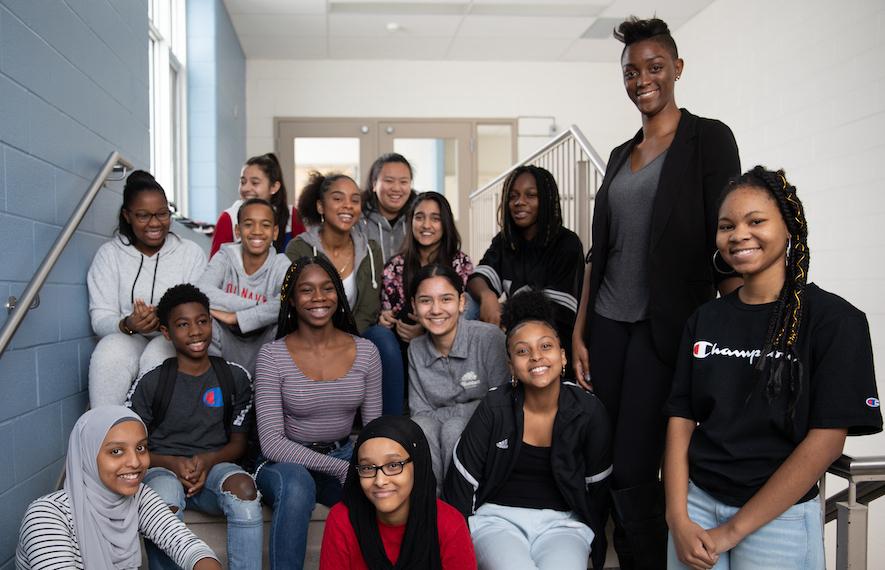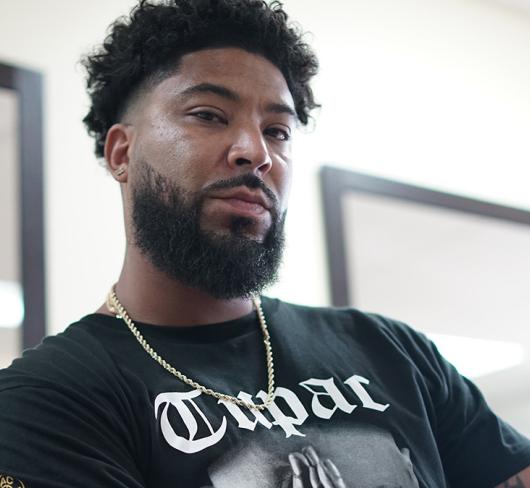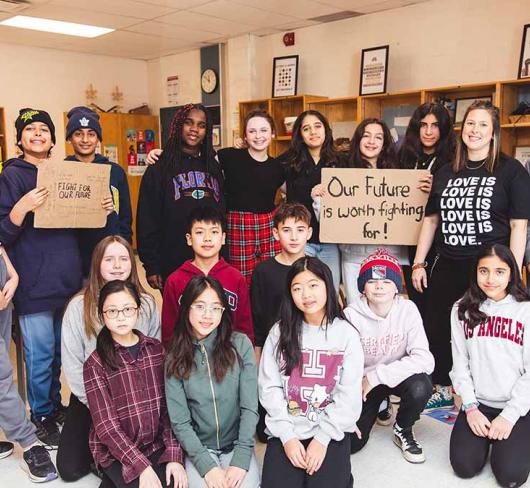
Working with Black Students and Their Families: Histories and Considerations
When I think back to my elementary education, I can use some of the fingers on one of my hands to count the number of racialized teachers I encountered. If you asked me to count how many of those teachers were Black, that number would dwindle to one. Between Kindergarten and Grade 8, I only interacted with one educator who looked like me. Many Black adults who were born prior to the 90s and grew up in the GTA faced a reality similar to mine, or had an experience that was even more problematic. These adults are now the parents of some of the Black students in our classrooms.
In addition to not having educators who looked like them (or represented any racial diversity for that matter), these parents had to deal with many other challenging issues while they were in school. Historically, Black students received harsher discipline than other students, had to deal with the tolerance of racist incidents in schools, were inappropriately streamed and did not see themselves in the curriculum that they were taught. These are the types of interactions that the parents of our second- and third-generation Canadian Black students had with the education system when they were younger.
According to the Black Experience Project (an Environics research study of the lived experience of individuals who self-identify as Black or of African heritage across the Greater Toronto Area), despite the diversity of the Black population in the GTA “there is a striking commonality of experience when it comes to being treated unfairly because of race.” These are the lived experiences of our Black students and their families (whether they are first-, second- or third-generation Canadian). Ontario and other parts of Canada have a persistent problem of overt prejudice, discrimination, profiling and mistreatment of Black people. Within our institutions, some of this has become more covert as language and culture has shifted, but it continues to exist nonetheless. It is important to understand both the history and the lived experiences of Black students and their parents because for some it has resulted in a mistrust of our institutions.
I know about this mistrust because of the conversations I have had with my students and their parents. I have students confide in me when they deal with racism in their community and I have to find the words to rebuild their confidence while preparing them for the fact that it will not be the last time that they will deal with racism. I have parents express delight that their child finally has a teacher who looks like them after seven years in our education system. There is the excitement my Black students convey when they finally see a face that looks like theirs at the front of the classroom, elated that I grew up eating the same foods, watching the same television shows, reading the same books and listening to the same music as they do. There is a comfort families show because we have a shared history and have faced similar adversities.
Now I am about to say something that may come as a shock to some people and be common knowledge to others. We live and work in a country where institutional and structural racism is very real and persistent. Many of our rules, policies and laws create and/or maintain racial inequity (A Better Way Forward, p. 10; The Black Experience Project in the GTA, p. 23). While this may be unintentional and does not necessarily mean that people within these organizations are racist, it is still a fact that perpetuates systems of discrimination. At times, it can be difficult for someone who has privilege to understand systemic racism because they live within the system and unknowingly benefit from the structures that are in place. They do not have to face many of the harsh realities that racialized people do.
A privileged person may also feel they are not contributing to the problem because they are not actively discriminating against others. This is not the case either. If someone is not actively working towards combatting anti-Black racism, then they are helping to perpetuate the systemic racism that exists. While there have been reports released and action plans put into place to combat anti-Black racism, there is still a great deal of work we can do as educators to eliminate the systemic barriers that exist for Black students today. There are also things that need to be considered when interacting with their family members.
Dawn Samuel is a member of the Durham Teacher Local.
How Can We Support Black Students?
1) Be a caring adult.
- Take an interest in the things that your students have going on. If they are part of a club, a team or if they have a specific interest, ask about it.
- Once you have learned about the activities in which they participate, follow up with them to see how it is going.
- Find ways to incorporate your students’ interests into your classroom activities.
- Give your students choice with respect to the topics they explore through inquiry.
2) Include culturally relevant and responsive representations of your students.
- Ensure your students see themselves in your classroom. This can be done both on the walls (with the posters you choose to post) and in the materials you choose to use with your students (reading materials from a diverse group of authors and perspectives).
- Pay close attention to these representations to ensure that they do not reproduce stereotypes or place Black characters in a position of inferiority.
3) Have high expectations for your students.
- Our perceptions of the abilities of our students can have a significant impact on their achievement.
- It is important you maintain high standards for your students to ensure they are working to their full potential and achieving at their highest standard.
How Can We Promote Positive Interactions with Black Families?
1) Build a genuine rapport with your families.
- Try to ensure that your interactions with families do not only occur because of a negative event.
How Can You Do This?
- Call to introduce yourself to the parents/guardians of your students at the beginning of the school year.
- Get involved in the school community by coaching a team, running a club, attending school events and/or participating in school initiatives.
- Let parents/guardians know when their child has done something positive.
- Keep the lines of communication open by ensuring that parents/guardians are aware of what is going on in the classroom and responding to them in a timely manner.
- Include parents/guardians as learning experts by asking for suggestions about authors and resources that could be used in the classroom or by inviting them to work with your students in an area of their expertise.
2) Remember the power of your words.
- When you are interacting with families, be mindful of what your choice of words could convey. The way that you say something can have a profound effect on the message that you are trying to deliver.
How can you do this?
- Use a growth mindset approach when talking to parents. By focusing on the areas for growth instead of speaking of deficits you are showing the potential of a child and not their limitations.
- Remember that the language we choose when having courageous conversations with families can make a significant difference in their perception and reaction.
3) Listen to understand.
- When a parent/guardian brings you a concern, they need to be heard.
How can you do this?
- Listen to understand what they are saying and try to understand why they are saying it. Do not listen to simply respond.
- Remember the history and life experience this person could be bringing to the conversation. At times, their frustration may not be directed at you, but could stem from other experiences that have been triggered.
- Once you have listened, reiterate what you understand to the parent to ensure you have understood what they wanted to communicate (and to allow them to clarify things that you may not understand).
4) Educate yourself.
- If this is not your experience, make sure you take the time to do some critical reading on anti-Black racism and systemic discrimination. You demonstrate your commitment to equity by becoming knowledgeable and working to understand the issues.
Resources for Educators
- Clarke, F. ed. Black Like We: Troubleshooting the Black Youth Experience. Toronto 2018. (Available at A Different Booklist.)
- Duale, F., S. Kemp-Jackson, K. Neuman, J. Smith and M. Wisdom. The Black Experience Project in the GTA, 2017. theblackexperienceproject.ca/wp-content/uploads/2017/07/ Black-Experience-Project-GTA-OVERVIEWREPORT- 4.pdf, (Accessed on 9 January 2019.)
- James, C.E. and T. Turner. Towards Race Equity in Education: The Schooling of Black Students in the Greater Toronto Area. Toronto: York University, 2017.
- edu.yorku.ca/files/2017/04/Towards-Race- Equity-in-EducationApril-2017.pdf (Accessed on 9 January 2019.)
- McLaughlin, M. and G. DeVoogd. Critical Literacy: Enhancing Students’ Comprehension of Text. New York: Scholastic, 2004.
- Ministry of Education. Capacity Building Series: Culturally Responsive Pedagogy – Towards Equity and Inclusivity in Ontario Schools, 2013.
- Ministry of Education. Capacity Building Series: Student Voice – Transforming Relationships, 2013.
- Ontario Anti-Racism Directorate. A Better Way Forward: Ontario’s 3-Year Anti-Racism Strategic Plan, 2016. ontario.ca/page/betterway-forward-ontarios-3-year-anti-racismstrategic-plan, (Accessed on 9 January 2019.)
- Ritchart, R. and Church, M. Making Thinking Visible: How to Promote Engagement, Understanding, and Independence for All Learners. San Francisco: Jossey-Bass, 2011.
Resources for Classroom
Primary
- Grant, S. Africville. Toronto: Groundwood Books, 2018.
- McLennon, D. Playground Poetry. Toronto: Discovering Diversity Publishing, 2018. (Available at discoveringdiversitypublishing.com/product-page/playground-poetryschool-days-edition.)
- Miller, S. Princess Hair. New York: Little, Brown and Company, 2017.
- Perkins, U.E. Hey Black Child. New York: Little, Brown and Company, 2017.
- Warner, J. Viola Desmond Won’t Be Budged. Toronto: Groundwood Books, 2010.
Junior
- Barnes, D. Crown: An Ode to the Fresh Cut. Chicago: Agate Publishing, 2017.
- Harrison, V. Little Leaders: Bold Women in Black History. New York: Little, Brown and Company, 2017.
- Lyons, K.S. Jada Jones: Rockstar. New York: Penguin Workshop, 2017.
Intermediate
- Dias, M. Marley Dias Gets It Done (And So Can You!). New York: Scholastic, 2018.

